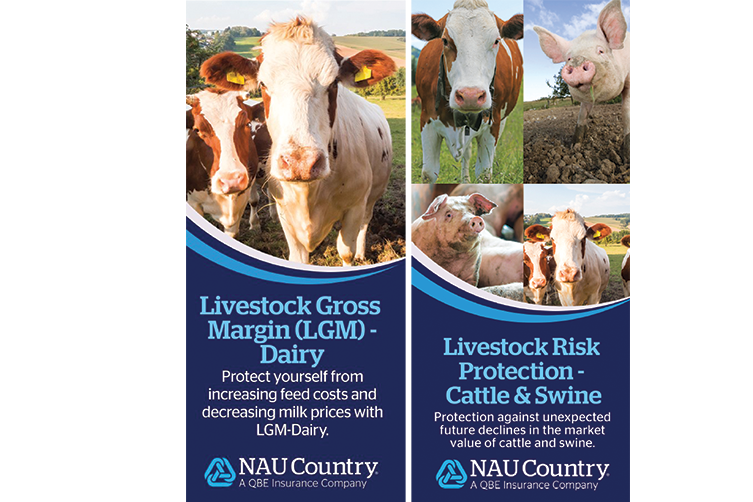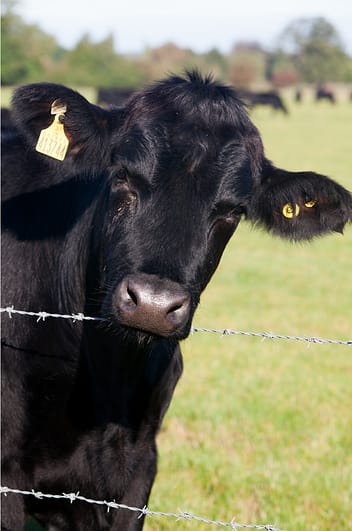Understanding Animals Danger Defense (LRP) Insurance: A Comprehensive Guide
Browsing the world of livestock risk defense (LRP) insurance can be a complex endeavor for several in the farming field. This type of insurance coverage provides a safeguard versus market variations and unanticipated scenarios that could influence livestock manufacturers. By understanding the ins and outs of LRP insurance, manufacturers can make informed decisions that might guard their operations from monetary risks. From just how LRP insurance policy works to the different insurance coverage options readily available, there is much to uncover in this comprehensive overview that could potentially form the means livestock manufacturers approach danger administration in their services.

Just How LRP Insurance Policy Works
Periodically, understanding the mechanics of Animals Risk Protection (LRP) insurance coverage can be intricate, but breaking down just how it works can give clearness for farmers and breeders. LRP insurance policy is a danger administration tool designed to protect animals manufacturers versus unanticipated rate decreases. It's essential to note that LRP insurance policy is not a revenue guarantee; instead, it concentrates only on rate threat defense.
Qualification and Insurance Coverage Options
.png)
When it pertains to insurance coverage choices, LRP insurance uses manufacturers the flexibility to pick the protection degree, protection duration, and endorsements that ideal fit their risk monitoring needs. Coverage levels usually vary from 70% to 100% of the expected ending value of the insured livestock. Manufacturers can also pick coverage durations that line up with their manufacturing cycle, whether they are guaranteeing feeder livestock, fed livestock, swine, or lamb. Recommendations such as rate threat protection can further customize protection to secure versus negative market variations. By recognizing the qualification criteria and coverage choices readily available, animals manufacturers can make informed choices to take care of threat successfully.
Benefits And Drawbacks of LRP Insurance Policy
When evaluating Livestock Danger Defense (LRP) insurance, it is important for livestock manufacturers to evaluate the drawbacks and benefits intrinsic in this danger management device.

One of the key benefits of LRP insurance coverage is its ability to provide protection against a decline in livestock costs. In addition, LRP insurance provides a level of versatility, enabling manufacturers to personalize insurance coverage degrees and plan durations to fit their specific requirements.
One limitation of LRP insurance policy is that it does not shield versus all types of threats, such as illness break outs or all-natural catastrophes. It is important for producers to meticulously analyze their private risk direct exposure and financial scenario to identify if LRP insurance is the appropriate danger management device for their operation.
Recognizing LRP Insurance Coverage Premiums

Tips for Making Best Use Of LRP Perks
Maximizing the benefits of Livestock Danger Defense (LRP) insurance requires calculated preparation and proactive threat administration - Bagley Risk Management. To take Recommended Reading advantage of your LRP insurance coverage, consider the complying with ideas:
Routinely Examine Market Problems: Remain educated concerning market fads and price fluctuations in the livestock industry. By monitoring these elements, you can make educated decisions regarding when to buy LRP insurance coverage to protect against potential losses.
Set Realistic Coverage Levels: When selecting insurance coverage degrees, consider your manufacturing prices, market worth of animals, and possible dangers - Bagley Risk Management. Setting sensible protection levels makes sure that you are effectively secured without paying too much for unneeded insurance
Diversify Your Coverage: Rather than counting solely on LRP insurance, consider expanding your danger administration techniques. Combining LRP with various other threat monitoring tools such as futures contracts or options can offer extensive protection against market unpredictabilities.
Review and Readjust Protection Consistently: As market conditions transform, regularly evaluate your LRP coverage to guarantee it aligns with your existing danger exposure. Adjusting protection degrees and timing of acquisitions can assist optimize your danger protection method. By following these pointers, you can make the most of the advantages of LRP insurance coverage and protect your animals operation versus unexpected risks.
Final Thought
Finally, livestock risk protection (LRP) insurance policy is an important device for farmers to handle the economic dangers related to their livestock operations. By understanding exactly how LRP functions, eligibility and protection alternatives, as well as the pros and disadvantages of this insurance, farmers can make educated decisions to secure their incomes. By thoroughly considering LRP costs and executing strategies to make best use of advantages, farmers can reduce potential losses and make sure the sustainability of their procedures.
Livestock manufacturers interested in acquiring Livestock Threat Defense (LRP) insurance policy can discover an array of qualification criteria and protection choices tailored to their certain animals procedures.When it comes to insurance coverage options, LRP insurance uses manufacturers the versatility to select the insurance coverage degree, protection duration, and endorsements that best fit their danger management demands.To grasp the details of Animals Risk Protection (LRP) insurance fully, understanding the factors read review influencing LRP insurance coverage costs is essential. LRP insurance coverage premiums are figured out by various components, consisting of the insurance coverage degree selected, the anticipated rate of animals at the end of the insurance coverage period, the type of animals being guaranteed, and the size of the coverage duration.Testimonial and Change Coverage Consistently: As market problems change, periodically review your LRP insurance coverage to guarantee it lines up with your current risk direct exposure.